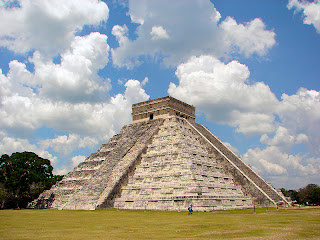Machu Picchu lies in the southern hemisphere, 13.164 degrees south of the equator. It is 80 kilometers northwest of Cusco, on the crest of the mountain Machu Picchu, located about 2,450 metres above mean sea level, over 1,000 metres lower than Cusco, which has an altitude of 3,600 metres . As such, it had a milder climate than the Inca capital. It is one of the most important archaeological sites in South America, one of the most visited tourist attractions in all of Latin America and the most visited tourist attraction in Peru. The year at Machu Picchu is divided between wet and dry seasons, with the majority of annual rain falling from October through to April. It can rain at any time of the year. Machu Picchu is situated above a loop of the Urubamba River, which surrounds the site on three sides, with cliffs dropping vertically for 450 metres to the river at their base. The area is subject to morning mists rising from the river.The location of the city was a military secret, and




.jpg)

